What Are Adverbs of Sequence?
Adverbs of sequence are words or phrases that show the order in which actions or events occur. These adverbs are especially useful in writing instructions, giving directions, or telling a story where the correct order of events is important. Some common adverbs of sequence include:
- First
- Next
- Then
- After that
- Finally
- Beforehand
- Initially
- Subsequently
Importance of Adverbs of Sequence
In everyday conversations, adverbs of sequence help make communication clear and structured. Imagine giving instructions for a recipe, explaining how to fix a device, or telling a story—without proper sequence, your message could become confusing. Adverbs of sequence make the progression of ideas logical and easy to follow.
Common Adverbs of Sequence
| Adverbs | Use |
|---|---|
| First | To indicate the first action in a sequence |
| Next | To show the action following the first one |
| Then | To continue the progression of actions |
| Afterward | To indicate something that happens later |
| Beforehand | To indicate an action that should be done earlier |
| Later | To refer to an action happening after a point in time |
| Finally | To indicate the last action in a sequence |
| Initially | To show something that happens at the beginning |
| Subsequently | To describe something that follows an action |
How to Use Adverbs of Sequence in Sentences
When using adverbs of sequence in a sentence, it is crucial to place them at the beginning or in the appropriate part of the sentence to ensure the order of events is clear. Here are some examples:
- First, wash your hands thoroughly.
- Next, chop the vegetables into small pieces.
- Then, heat the oil in a pan.
- After that, sauté the onions until they turn golden.
- Finally, add the spices and let it simmer.
These adverbs are essential for presenting steps in an orderly manner.
Example Sentences Using Adverbs of Sequence
- Initially, the project seemed overwhelming, but we made progress quickly.
- I’ll see you at the meeting, but beforehand, I need to finish some work.
- She packed her bags, and afterward, she called a cab.
- Next, you will need to add the sugar and stir gently.
- Finally, we reached our destination after a long day of travel.
- Subsequently, they realized the error in the report and made corrections.
- Later, we went out for dinner after finishing our assignments.
- First, you must install the software on your computer.
- Then, they decided to launch the product in multiple regions.
- Beforehand, make sure you have all the necessary materials for the presentation.
Using Adverbs of Sequence in Writing
When writing essays, instructions, or even stories, adverbs of sequence act as signposts that guide the reader from one point to the next. Let’s look at how they are used in a short story:
First, Alice woke up and checked the time. She realized she was late for her meeting. Next, she quickly got dressed and rushed out of the door. Then, she grabbed her keys and headed for the car. Afterward, she realized she forgot her presentation slides at home. Finally, she returned, collected her slides, and made it just in time for the meeting.
Advanced Usage
In more formal writing or advanced English, you may encounter complex adverbs of sequence such as “subsequently,” “thereafter,” and “initially.” These words serve the same purpose but are often used in more academic or professional contexts. Here are some examples:
- Subsequently, the team reviewed the data and made a decision.
- The weather was sunny in the morning; thereafter, it started to rain heavily.
- Initially, the research indicated positive results, but further analysis was required.
Adverbs of Sequence Example Sentences
| # | Sentence |
|---|---|
| 1 | First, we will eat breakfast. |
| 2 | Next, she walks to school. |
| 3 | Then, he starts his homework. |
| 4 | After that, we play in the park. |
| 5 | Finally, we go to bed. |
| 6 | First, I open my book. |
| 7 | Next, she turns on the TV. |
| 8 | Then, they went shopping. |
| 9 | After that, we watched a movie. |
| 10 | Finally, they left the house. |
| 11 | First, he checked his emails. |
| 12 | Next, we went to the market. |
| 13 | Then, she wrote the letter. |
| 14 | After that, he made a call. |
| 15 | Finally, we finished the project. |
| 16 | First, I cleaned my room. |
| 17 | Next, we went for a walk. |
| 18 | Then, she cooked dinner. |
| 19 | After that, I read a book. |
| 20 | Finally, we had dessert. |

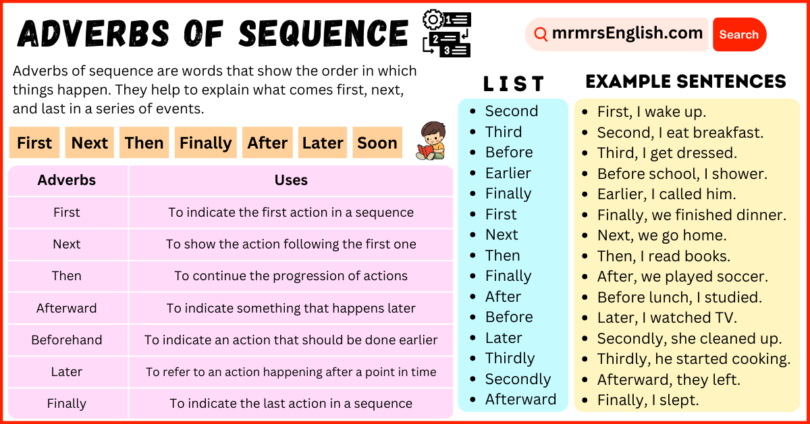
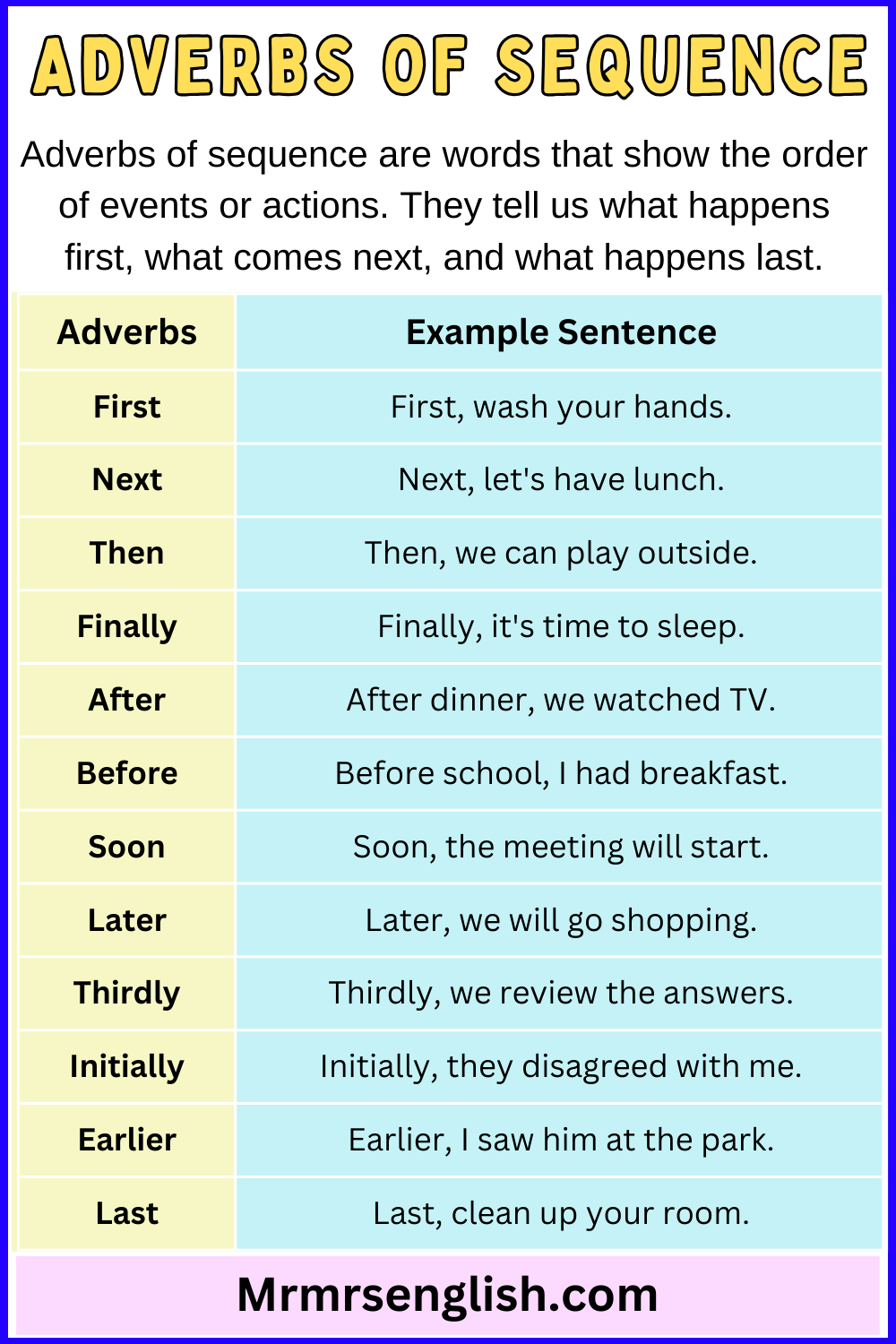



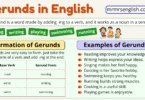
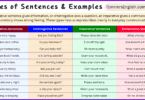
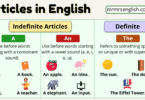

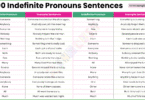
Leave a Comment